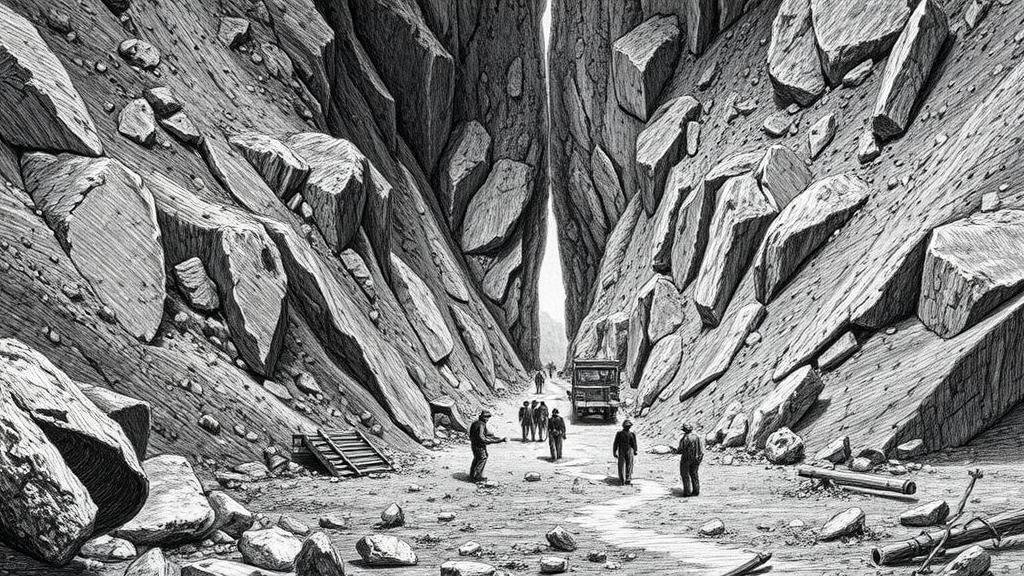How the Silver Ore in the Oscura Mining District Was Located and Extracted
How the Silver Ore in the Oscura Mining District Was Located and Extracted
The Oscura Mining District, located in the southern portion of New Mexico, has a storied history in silver mining, particularly during the late 19th and early 20th centuries. This article delves into the methods used for locating and extracting silver ore in this region, supported by historical examples and industry practices.
The Discovery of Silver Ore
Silver ore in the Oscura Mining District was primarily discovered through a combination of geological surveys, prospecting, and the sheer luck of stumblers upon significant deposits. Geologists utilized their understanding of mineral deposits to identify areas with primary indicators of silver, such as:
- Presence of quartz veins
- Significant iron oxide staining
- Outcrops of mineralized rock
The discovery phenomenon was catalyzed in 1879 when prospectors discovered high-grade silver ores in the area, prompting a rush of miners and investors. One notable figure was William S. Bugbee, whose identification of silver lodes around the Oscura Mountains marked the beginning of serious mining activities.
Techniques for Silver Ore Extraction
Once viable silver deposits were located, various extraction techniques were employed. The methods used were heavily influenced by the technology available at the time, as well as the geographic and geological features of the Oscura Mining District. Key extraction techniques included:
- Underground Mining: Following the discovery, miners extensively employed underground mining techniques, primarily shaft mining and adit mining. This involved digging tunnels directly into the mountains to access ore veins while minimizing surface disturbance.
- Heap Leaching: In the late 20th century, heap leaching began to take precedence due to its cost-effectiveness. This method involves stacking ore onto a leach pad and applying a cyanide solution that percolates through the heaps, dissolving silver as it moves.
A historical example of underground mining in the Oscura District can be traced back to the Black Mountain Mine, where miners excavated high-grade ores directly from the mountains depths.
Challenges Faced During Extraction
Extracting silver ore is often fraught with challenges that can hinder productivity and safety. In the Oscura Mining District, miners faced various obstacles, including:
- Geological Instability: Given that much of the district is mountainous terrain, miners had to contend with the risks associated with rockfalls and cave-ins.
- Environmental Concerns: As mining practices evolved, the environmental impact of extraction methods began to come under scrutiny, particularly with regard to water contamination from mining runoff.
These challenges required ongoing adaptations in mining practices and methods of ore extraction, ultimately leading to innovations in safety protocols and environmental protection measures.
Financial and Economic Implications
The impact of silver extraction from the Oscura Mining District extended beyond local wealth; it contributed significantly to New Mexicos economy in the late 1800s and early 1900s. For example, the value of silver produced during its peak years witnessed a substantial increase. By the early 1900s, annual silver production in the region was estimated to be valued at over $1 million, making it one of the significant contributors to the states economy.
Contemporary Relevance and Future Prospects
Today, the legacy of silver mining in the Oscura Mining District continues to influence modern mining practices and geological exploration. Advances in technology have led to improved methods of locating and extracting silver, which are crucial in meeting the growing global demand for silver in industries such as electronics and renewable energy.
For example, modern geological mapping techniques, including geospatial analysis and remote sensing, afford greater accuracy in locating mineral deposits without extensive surface alteration. This shift represents a sustainable approach to mining that echoes the lessons learned from historical practices in the Oscura Mining District.
Actionable Takeaways
Understanding the historical context of silver ore extraction in the Oscura Mining District highlights several key points for stakeholders today:
- Emphasize exploration techniques that prioritize environmental sustainability.
- Invest in advanced technologies for efficient and safe mining operations.
- Leverage historical data and practices to improve future mining strategies.
As the industry evolves, the historical significance of places like the Oscura Mining District serves as both a lesson and a reminder of the value of responsible resource extraction.



